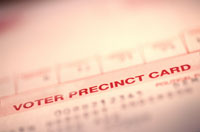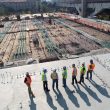Locals prepare for the challenges of redistricting

This spring, local governments will begin the process of using recently gathered U.S. Census 2010 data to redraw their district lines to reflect population changes. In addition to dealing with local redistricting, some cities and counties also will be addressing the effects of state legislative redistricting.
At the state level, the legislature or a commission handles redistricting, with some states requiring approval from the governor. As legislative district lines are redrawn, cities and counties could find themselves grouped together with new municipalities and under new representation.
“Legislative redistricting determines representation, and it could be that if they redraw districts, your political clout could diminish,” says Jacqueline Byers, director of research and outreach for Washington-based National Association of Counties. “A rural county could be thrown in with an area with very different needs, like an urban area. That can be hard for a representative to get their arms around.”
Predicting how an area’s population change will affect its representation can be difficult, according to the Claremont, Calif.-based Rose Institute of State and Local Government report, “The 2010 Census and California’s 2011 Redistricting.” “Growth will not necessarily translate into control of actual districts because its population may be broken up and used to fill in districts that are centered in other regions,” the report states.
For example, the report points out that the San Francisco Bay area has not grown as quickly as the rest of the state, particularly the southeastern region, which contains rapidly expanding Riverside and San Bernardino counties. Therefore, the San Francisco area should theoretically lose a district. Yet, instead, the Bay area’s districts could be extended eastward to pick up population.
After cities and counties are shifted into different districts, the affected local leaders will need to begin working with new state representatives. “They’ll have to get to know the legislative members they’ll be interacting with,” says Tim Storey, senior fellow with Washington-based National Conference of State Legislatures.
Until the new districts are final, legislators will be somewhat distracted with the process, Storey adds. “At the legislative level, it’s more complex because there are more people involved, and it takes away from their ability to deal with other issues,” he says. “Most legislatures have a limited session and only so much time.”



















